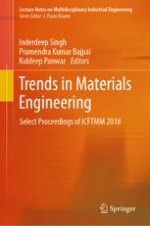This book comprises select proceedings of the International Conference on Futuristic Trends in Materials and Manufacturing (ICFTMM 2018). The book includes latest research on conventional materials, advanced metals and alloys, polymeric materials and composites. In addition to the characterization of different advanced materials, the book also discusses their applications in various fields such as marine, automotive, aerospace, sporting equipment, and infrastructure. The book offers an insight into the manufacturing of cost-effective and high performance materials products. The contents of this book will be useful for students, academicians, and researchers working in the field of materials science and engineering.
